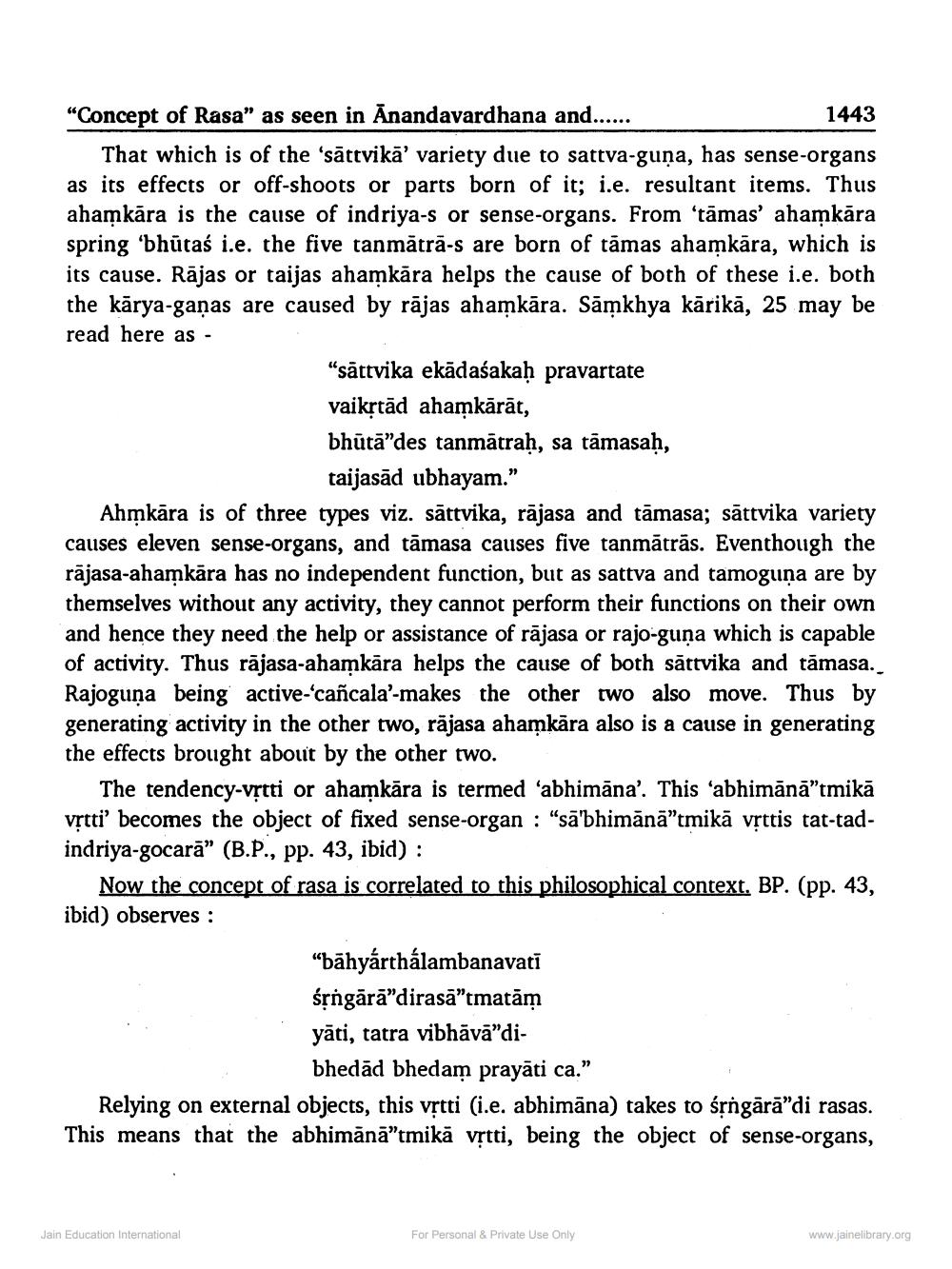________________
"Concept of Rasa" as seen in Anandavardhana and......
1443 That which is of the 'sättvikā' variety due to sattva-guna, has sense-organs as its effects or off-shoots or parts born of it; i.e. resultant items. Thus ahamkāra is the cause of indriya-s or sense-organs. From 'tāmas' ahamkāra spring 'bhūtaś i.e. the five tanmātrā-s are born of tāmas ahamkāra, which is its cause. Rājas or taijas ahamkāra helps the cause of both of these i.e. both the kārya-ganas are caused by rājas ahamkāra. Sāmkhya kārikā, 25 may be read here as -
"sättvika ekādaśakaḥ pravartate vaikstād ahamkārāt, bhūtā”des tanmātraḥ, sa tāmasaḥ,
taijasād ubhayam." Ahmkāra is of three types viz. sāttvika, rājasa and tāmasa; sāttvika variety causes eleven sense-organs, and tāmasa causes five tanmātrās. Eventhough the rājasa-ahamkāra has no independent function, but as sattva and tamoguņa are by themselves without any activity, they cannot perform their functions on their own and hence they need the help or assistance of rājasa or rajo-guna which is capable of activity. Thus rājasa-ahamkāra helps the cause of both sāttvika and tāmasa. Rajoguņa being active-cañcala’-makes the other two also move. Thus by generating activity in the other two, rājasa ahamkāra also is a cause in generating the effects brought about by the other two
The tendency-vștti or ahamkāra is termed abhimāna'. This ‘abhimānā”tmikā vrtti' becomes the object of fixed sense-organ : "sā'bhimānā”tmikā vrttis tat-tadindriya-gocarā” (B.P., pp. 43, ibid) :
Now the concept of rasa is correlated to this philosophical context. BP. (pp. 43, ibid) observes :
“bāhyárthálambanavati śrngārā"dirasā”tmatām yāti, tatra vibhāvā”di
bhedād bhedam prayāti ca." Relying on external objects, this vștti (i.e. abhimāna) takes to śrngārā”di rasas. This means that the abhimānā”tmikā vịtti, being the object of sense-organs,
Jain Education International
For Personal & Private Use Only
www.jainelibrary.org




